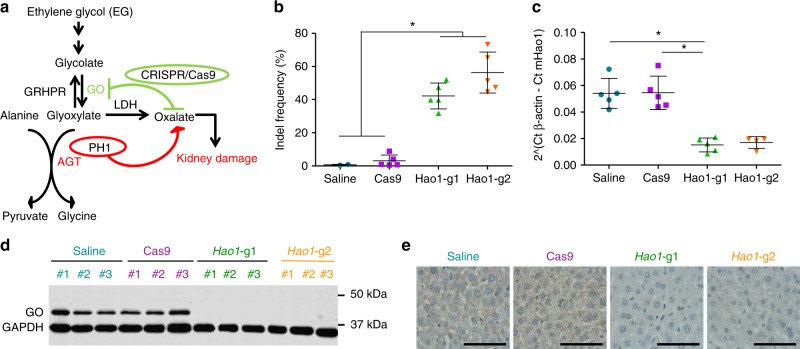Fig. 1.
Efficient GO inhibition using CRISPR/Cas9 in PH1 animals. a Schematic representation of the CRISPR/Cas9-mediated SRT strategy targeting the Hao1 locus. b Editing efficiency measured by TIDE in 12–14-week-old PH1 animals 4 weeks after treatment with saline (n = 5), Cas9 (n = 5), Hao1-g1 (n = 5) and Hao1-g2 (n = 5). c Quantification of Hao1 mRNA expression levels by RT-qPCR in animals treated as in (b). Data are presented as mean ± SEM and Kruskal–Wallis statistical test was used to evaluate differences between groups. d Western blot analysis of GO protein levels in representative PH1 animals treated with saline, Cas9, Hao1-g1, and Hao1-g2. GAPDH was used as loading control. e Representative IHC images of liver sections stained for GO, from PH1 animals treated with saline, Cas9, Hao1-g1, and Hao1-g2. Scale bar: 100 μm. *p < 0.05

